|
“Always ask the Spirit what Jesus expects from you at every moment of your life and in every decision you must make, so as to discern its place in the mission you have received.” -Pope Francis, Gaudete et Exsultate, 23
Have you ever prayed a novena? Some people might find such a thing out of fashion, but it is making a return among a number of Catholics. For some, the practice never left. For nine years, as pastoral director of St. Jude Shrine in Baltimore, Maryland, I led weekly novena prayers on Wednesdays and Sundays during the perpetual novena in honor of St. Jude, patron of hopeless cases. The custom of praying a novena, usually nine days of prayer, arose from the liturgical period of nine days between the Solemnity of the Ascension of the Lord and Pentecost Sunday. (In recent years, many dioceses have moved the Solemnity of the Ascension from Thursday to the Sunday before Pentecost.) This liturgical time marks for us the period between when Christ ascended to the Father and the sending of the Holy Spirit on the Blessed Virgin Mary, the Apostles, and the disciples. The Risen Christ gave his followers a mission. He told them to “Go”. But go and do what? “Make disciples of all nations, baptizing them in the name of the Father, and of the Son, and of the Holy Spirit” (Matthew 28:19). They did not go immediately, but instead were looking at the sky. They were confused. Then they went into the Cenacle or the Upper Room, prayed and discerned together. They were not ready to go forth on mission for Christ. When the Holy Spirit came at Pentecost, they received the boldness to preach and to heal in the name of Jesus Christ. Only then did they accept their being sent by Christ. As Christ sent them, so he sends us. St. Vincent Pallotti taught, as did the Second Vatican Council, that the baptized are sent into the world as apostles of Christ. In word and deed, our world needs to hear proclaimed that God is love, Christ saves, and Christ is alive (Christus Vivit, chapter 4). This is the initial proclamation of the Good News or the kerygma. When people encounter us, do they encounter Christ? Do we accompany them into greater faith in him? Are they welcomed into the community of faith, the Church? Do they realize that they, too, are sent? (cf. Living as Missionary Disciples, Part I). We do none of these works alone. We are dependent on the Holy Spirit. As Pope Francis teaches us, “When you receive the Spirit, he draws you ever more deeply into the heart of Christ, so that you can grow in his love, his life and his power (Christus Vivit, 130). The Holy Spirit will guide us in our discernment and in the mission that we have been given by Christ. May the Charity of Christ urge us on!
0 Comments
I would like to begin this monthly recollection talk by stating the reason why I was chosen as the preacher. Owing to the current situation of the Coronavirus pandemic, the preacher chosen for this monthly retreat, Fr. Louis Caruna SJ, Dean of the Faculty of Philosophy at the Pontifical Gregorian University (Rome), was unable to come. Incidentally, two weeks ago, I had written - in Polish - an article on Pallotti's commitment during the cholera epidemic in Rome in 1837. The rector of our community had obviously seen it, and had probably read it, so he asked me to develop it a bit more and then deliver it for the recollection. Thus, I now stand as the ‘extra cog’ – a cog as significant as the real cog for any machine, even for the machine called ‘the community.’ The following four texts served as the main sources for my reflection. They are: Francesco Todisco, San Vincenzo Pallotti: Profeta della Spiritualità di Comunione; Francesco Amoroso, San Vincenzo Pallotti: Romano; the ancient but the excellent Dizionario di Erudizione Storico-Ecclesiastica by Gaetano Moroni; and the letters of Pallotti. The 1830’s, especially the years between 1835 and 1837, were years of great suffering for Europe because of the cholera epidemic, which was then known as the ‘Asian epidemic’ because it had originally come from India (part of today’s Iraq). In previous centuries, epidemics spread from city to city starting from port cities such as Civitavecchia, Genoa and Naples. The cholera epidemic began differently when it reached some Baltic countries, such as Poland, as early as 1831. Then in 1832 the epidemic reached England; in 1833 it was brought to Ireland, Portugal and the Netherlands. It then spread to France in 1835. As the epidemic was spreading, it left behind a long trail of death (Moroni, 233-243). The spread of the disease was quick. In Italy, the first epidemic deaths occurred on September 13th, 1835. As a preventive measure to preserve the Eternal City from the disease, Pope Gregory XVI ordered, without any delay, the exposition of the most distinguished Christian relics for the common veneration in the churches where they were present. Here I want to specify the relics considered to be important for common veneration both in times of solemn and difficult occasions in 19th century Rome. These details are taken from Moroni’s book (Dizionario di Erudizione Storico-Ecclesiastica). They were: · The skulls of the apostles Peter and Paul in the Lateran Basilica; · The holy face of Veronica and the finger of St. Peter in the Vatican Basilica; · The body of St. Pius V in the Basilica of Saint Mary Major; · The Wood of the Cross and the Thorn of the Crown in the Basilica of the Holy Cross in Jerusalem; · The scourging pillar in the minor Basilica of St. Praxedes (Basilica di San Prassede); · Two celebrated crucifixes – one in St. Lawrence in Damaso (a minor basilica) and the other in the church of St. Marcello al Corso; · The imprisonment chains of Sts. Peter and Paul in the Basilica of St. Peter in Chains; · The arm of St. Roch, the protector against the plague in the church of St. Roch in Lungotevere, Ripetta; · The arm of St. Francis Xavier in the church of Gesù (the mother church of the Society of Jesus); · The bones of St. Sebastian in the minor basilica of St. Andrew of the Valley (San Andrea della Valle). Pope Gregory XVI also ordered the celebration of an extraordinary novena to be held from August 6th-15th, 1835 in all the fifteen churches dedicated to Mary [in Rome] in preparation for the feast of the Assumption of Mary, By July 31st, 1835 the Cardinal Vicar Odescalchi had published a decree L’invito Sacro (The Holy Call), which was fixed on the doors of all the churches. However, this document does not have much in common with the decrees issued by Cardinal Angelo De Donatis (also posted on church doors) on March 8th, 12th, and 13th, 2020. The decree signed by Cardinal Odescalchi reveals the 19th century mentality regarding the epidemic. I will cite a few lines: A fatal disease, which for the obscurity of its origin, for the extravagance of its progress, for the uncertainty of its attacks, appears for the believers, to have the features and signs of a scourge. Will Rome be immune from it (dispensed from it)? Oh! Romans, do not delude yourselves! Yes, Rome has failed its duty. The Holy Name of God is trampled on; feasts and solemnities are desecrated, and with what an insolence the vice roams the streets of the Holy City! So if Rome has failed its duty, it must again be scourged. Oh! Unhappy Rome, only with MARY covering the city with her mantle, the arm of the Angel of End Times that is waiting to empty the poisonous cup on the poor guilty children, can be held back. So, let us all turn to MARY. Cardinal Vicar Odescalchi had some concrete proposals. On the positive side, there was the announcement of an extraordinary novena for the occasion of the feast of the Assumption of Mary in all the fifteen churches dedicated to her. On the negative side, many public gatherings were also forbidden. Specifically, during the period of the novena, taverns, places selling alcohol and most other places of entertainment were all closed. The one exemption was coffee shops. The great Roman poet Giuseppe Gioachhino Belli composed numerous sonnets expecting to exorcise the city of the impending arrival of the virus. Some of the letters of Pallotti from this period of time reveal that he was committed to promoting the initiatives announced by Cardinal Odescalchi. Another preventive and interesting initiative started by Pope Gregory XVI was the procession with the icon of the Madonna Salus Populi Romani - that is "Salvation of the Roman People" (some translate as "Protector of the Roman People"). In fact, the pope had ordered that on September 8th, 1835 the icon of the Madonna Salus Populi Romani should be carried in procession from the Basilica of St. Mary Major (Santa Maria Maggiore) to the Vatican Basilica (San Pietro). This is the famous icon, the icon par excellence of Rome (The icon of the Eternal City), that Pope Francis kneels in front of as he starts and ends each of his apostolic journeys. The icon Salus Populi Romani has a very close connection to the history of the Eternal City and the Supreme Pontiffs. It is believed to have been painted by the St. Luke the Evangelist and it was seen as the reason for victory against epidemics and plagues as well as the reason for many other miracles. Il Diario di Roma, a periodical of the time, explained that the pope had ordered the procession to “assure the souls of the powerful protection of the great Mother of God who regards with delightful eyes this Seat of Christianity [Rome].” Unfortunately, the procession in which the pope walked barefoot was accompanied by such bad weather that this icon of the Virgin Mary was forced to stay for eight days in the New Church (Chiesa Nuova also known as Santa Maria in Vallicella). The return journey of the icon from St. Peter’s Basilica to the Basilica of St. Mary Major was also disrupted by bad weather. In its return journey, the icon Salus Populi Romani had to stay for a long period of time in the Church of Gesù. It finally reached the Basilica of St. Mary Major on September 30th, 1835. The Spread of the Epidemic: The Report of the Physicians, Newspapers and the Church: In Rome, the medical practitioners exhorted people not to be afraid and not to worry. They also forbade the public from talking about deaths and burials, believing as if optimism and joy fortified people against the attacks of cholera. In addition, the medical practitioners urged people to keep their homes very clean. The General of the Society of Jesus, Fr. Jan Roothaan (whom Pallotti knew very well), had personally vowed to celebrate the feast of The Immaculate Heart of Mary every year if the Jesuits in Rome who had given themselves generously for the care of the sick and were in the frontline fighting the contagion, were spared from the disease. Despite all these attempts, by July 1837 the fear of the epidemic had penetrated all social levels. On July 5th Fr. Vincent Pallotti began a Triduum of prayers with a particular intention seeking favors for the people of Naples, the port city where the epidemic had already penetrated. In the Triduum, Pallotti also blessed the food eaten by infected people so that they may be protected by God. On July 29th, Il Diario di Roma launched an attack on its front page on people who were spreading news about the cholera epidemic. It declared itself the right authority on the news pertaining to the spread of the epidemic and said: “[We] deny completely the ill-founded rumor already spread in Rome, that some individuals in the Capital had contracted the Asian cholera.” But the people knew better. They gave little credit to the journals. They knew very well that the newspapers and journals only intended to avoid panic in the city. On August 6th, 1837, the icon of the Virgin (Salus Populi Romani) was again brought in procession to the Church of Gesù. This event was recorded by Il Diario di Roma. According to the report, a squad of soldiers on horseback went before the procession and the procession itself was led by the pupils of the Apostolic Homes and Orphanages. Following them were members of the clergy with candles or torches. The clergy also took turns reciting the rosary. Next in the procession was the icon surrounded by some Jesuits. Everyone else was shut off by the Swiss Guards. The procession went around Via Quattro Fontane and Via del Quirinale. Pope Gregory XVI, the College of Cardinals and the senator of Rome (Prince Orsini – Duke Domenico) joined in the procession as it reached Via del Quirinale. Together, the procession moved slowly towards the Church of Gesù where the Madonna was received by the General and members of the General Curia of the Society of Jesus. The litanies were then sung, and the pope concluded the procession with the final blessing. On August 15th, a grand procession was organized from the Church of Gesù to bring the image of the Madonna Salus Populi Romani back to the Basilica of St. Mary Major (Santa Maria Maggiore). Acting on the exhortation of the Cardinal Vicar, Fr. Vincent Pallotti workedt to organize a sizable group of clergymen who would walk barefoot with him in the procession. The group started its journey from the Church of the Holy Spirit of the Neapolitans located in Via Giulia. To organize this group of religious and diocesan clergy, Pallotti made the best use of all his acquaintances. Pallotti wrote to Fr. Efisio Marghinotti, one of his friends and collaborators: “I ask you humbly, if possible, to inform many clergy of tomorrow’s barefoot procession. Also inform the Abbot Bianchini that even if he could not walk barefoot he could at least direct [the procession]. Tell everyone to get at least twelve others or more [for the procession]. We meet in the Church of the Holy Spirit.” (OCL II, p. 199) In spite of the efforts, the situation in Rome was not good. It is said that fear is the mother of all excesses. This was proved right. On the evening of August 14th, an English Language teacher was killed by a crowd of people near Piazza del Campid’oglio because the victim was believed to be an "anointer" who spread the disease by anointing people and things. The optimism advised by the medical experts was not of much use. Neither could the prayers contain the natural course of the epidemic! Finally, on August 19th, 1837 Il Diario di Roma admitted what was already evident. It said that according to the opinions of the medical doctors, the Asian Cholera had entered Rome. By the beginning of September, the Count Antonio Maria Plebani, who was residing in the region of Marche but whose son was studying in Rome, had already sent a letter filled with grievances to Pallotti. In the letter, he affirmed that there were reasons to worry this time: “cholera, earthquakes, wars, hunger …” Fr. Vincent Pallotti replied saying: “Let us seek God. Let us seek Him always and in all things. And we will find Him and in Him we will all be saved.” (OCL II, p. 206) Meanwhile, in the same period of time, Giovanni Marchetti, a married lay person and a collaborator of Pallotti from Gubbio, wrote to Pallotti asking how he could escape the epidemic. Pallotti replied advising him not to escape from God, but to look for a way to not merit punishment of God. Pallotti wrote: “Hold firm to the maxim that there is no escaping from the Divine scourge. In order to not deserve it, it is better to attend to one’s proper duties.” (OCL II, p. 208) Pallotti’s Response to Cholera: Let us now look at the response of Pallotti to the cholera epidemic. Inside the Church of the Holy Spirit of the Neapolitansthere is a plaque with an inscription bearing the works undertaken by Pallotti as the rector of the church. The inscription reads: “From 1835 to 1846, St. Vincent Pallotti, the Roman priest, was the rector of this Church of the Holy Spirit of the Neapolitans: · He founded the Union of the Catholic Apostolate. · He founded a College for the Foreign Missions. · He celebrated the First Epiphany Octave. · He celebrated the Marian Month of May for the clergy and the faithful. · He animated the spiritual conference of the clergy. · During the cholera epidemic of 1837, the people of Rome recognized in him a holy priest and in his work ‘an apostolate of charity’. In fact, during the cholera epidemic, the action of the clergy in general was exemplary. Pope Gregory XVI, who himself was old, made visits to hospitals, thus setting an example for the clergy. We should not be surprised, therefore, that during the epidemic, the charity of Fr. Vincent Pallotti and the members of the Union emerged in a special way to assist the needy in every part of the city. Already by August 19th, Pallotti requested the ministerial faculties for the forgiveness of reserved sins for his collaborators Melia and Michettoni. He asked for them in order: “to satisfy the multitude of penitents, who in the current circumstances approach the Holy Tribunal of penance in the Church of the Holy Spirit of the Neapolitans.” (OCL II, pp.200/201) Fr. Vincent Pallotti was fully committed – among many things - to assisting the sick and helping their families and also spending many hours in the confessional. Sr. Maria Colomba (a future Pallottine Sister) testified in this regard: "Several times I have seen him [Pallotti] in surplice and stole following the hearse that carried the dead." Here is another example: shortly after the end of the epidemic, Pallotti wrote to Mr. Cassini Tommaso apologizing that he was not able to visit a certain prisoner. Mr. Cassini Tommaso had asked Pallotti to visit the prisoner in Castel Sant’Angelo (The Mausoleum of Hadrian). Pallotti could not visit the prisoner because of the other works necessitated by the epidemic. “When at last I went – writes Pallotti – the person was no longer there.” (OCL II, p.234) In order to respond to the numerous appeals that Pallotti received, he divided the city into sectors, and entrusted the sectors to the members of the Union of the Catholic Apostolate. He wrote shortly after: "In the time of cholera, The Pious Society placed a small box at the entrance of the sacristy of the Church of the Holy Spirit of the Neapolitans. And it was accessible to all the poor. It was enough that the poor person wrote in a small piece of paper the name, the surname, the place of residence, the name of the parish, and the person’s need and placed it in the box. Then, two by two, the priests went to the place of the poor and cared for their needs.” (OOCC V, 139/140) The members of the Union sought to help according to the need of the place or person; some helped with clothing and others with coupons for bread and meat; some helped bring lemons to cholera patients since lemons were then considered to be the most suitable medicine for cholera. Pallotti had noted this: “The priests of the Pious Society, night and day, went to the assistance of the cholera patients. The distribution of coupons for bread and meat had been a practice since the beginning of the Union in 1835, and continues even to this day.” (OOCC V, 139-140) At last, on October 12th, the epidemic had been contained and it was declared that the epidemic had been defeated. Rome alone reported 5,419 deaths out of the population of 156,000. Among the deaths were some people who were very close to Fr. Vincent Pallotti. One such person, Blessed Anna Maria Taigi, died of cholera on June 9th, 1837. In spite of her popularity, many medical doctors did not participate in her burial. They did so in order not to infect other people with the disease. In a letter written on June 9th, 1837, Fr. Vincent Pallotti communicated the following to Fr. Felice Randanini in Vienna: “In Rome, yesterday died in secret a great Servant of God, who had been showered with many extraordinary gifts.” (OCL II, p.183) The father of Pallotti, Peter Paul Pallotti, passed away on September 15th. He had gone to the New Church (Chiesa Nuova) to pray. There, he collapsed on the ground in front of the altar of St. Philip Neri. He was immediately rushed to his home. Even before Fr. Vincent Pallotti could arrive, he died. That same day, Fr. Pallotti dispatched three letters asking for suffrages in favor of his father "to whom I owe so much" (OCL II, 206/207) As the year 1837 ended, two other deaths marked the life of Fr. Vincent Pallotti. First was the death of Fr. Bernardino Fazzini, Pallotti’s confessor for thirty years, on December 25th (Christmas Day). Second was the death of Fr. Gaspar del Bufalo, Pallotti’s friend and collaborator, and the founder of the Missionaries of the Precious Blood on December 28th, the Feast of the Holy Innocents. A few days later, in a letter to Randanini, the Secretary of the Apostolic Nunciature in Vienna, Pallotti wrote: “Today, it has been nine days since the death of the great missionary and the canon Fr. del Bufalo, and twelve days since the death of the Chaplain of the Apostolic Hospice of St. Michael a Ripa [Fr. Fazzini]. Two great saints! Pray for me that I may gain from the examples, advices, and exhortations that they gave me with their lives.” (OCL II, 232/233) The Conclusion: The Monthly Retreat – Preparation for the Good Death: And finally, I would like to highlight a theme: the preparation for death. How many of you, today, ask yourselves about the purposes of a monthly retreat? When you do that, you will find that a monthly retreat is: · A nutritious aliment for prayer · A renewed self-dedication to God · A perfect and generous push into the apostolate · A growth in fraternal love They are all true and right, but traditionally, the monthly retreat had also been thought to be, among many other things, an exercise in preparation for death. Pallotti also speaks of it in the Rule of our Congregation. In other words, we can say that the objective of a monthly retreat is to prepare our mind and heart to face death, the undeniable reality! Firstly, we need to acknowledge it! Not just acknowledge, but we also need to overcome the fear of death. Thus, when death approaches, we will be better equipped to face it. Besides, acknowledging death would help us to appreciate our daily living by providing it with more meaning and richness. We give two examples. The First Example: It is taken from a letter written by Pallotti to a lay person, Luigi Nicoletti. Nicoletti was two years younger than Pallotti and like Pallotti, a Roman. But Pallotti had high respect for Nicoletti. Nicoletti died in 1851, just a year after St. Vincent Pallotti’s death. On September 20th, 1822 during his stay in Monte Compatri with the Carmelites, Pallotti had addressed a letter to Nicoletti. I now cite a large passage from the same letter: Yesterday, as the sun was about to set, the Spirit by the infinite Mercy of God led me on a high solitary mountain [probably the 773 meter high Monte Salomone [a mountain] that is located along the road that leads from the town of Monte Compatri to the town of Rocca Priora]. Isolated from human association, looking towards heaven, I lost myself in prayer. And as I prayed, I remembered you distinctly. In fact, God had shown me that you had not gained much from the letter that you received last year from the well-known, caring and considerate Jesuit. From the letter, it was quite frightening to know that your death was close. But it was not God’s intention that you always had the thought of death on your mind so that you lived every day as the day of your death. I humbly ask you, with my face on the ground, to promise me not to spend any day without having at least for a few moments meditated on the great Principle of Death. Do not believe that this means that your passage to Eternity is near, but I say this, so that by responding to the grace of God, you will increasingly enrich yourself with the merits for Eternity. (OCL I, pp.155/156) The Second Example: As the cholera epidemic was spreading, the anxious and apprehensive Fr. Felice Randanini, the Secretary of the Apostolic Nunciature in Vienna, wrote to Pallotti several times. He felt that he had contracted the disease (cholera). But Fr. Vincent Pallotti reassured him writing: “Look for cholera as much as you want, but you will not be able to find it because it is not for you.” (OCL II, p.139) The other times when the young secretary was caught up in fear, Pallotti eased his fear by foretelling that he would see the secretary again in Rome. Pallotti wrote: “About the fear of your death, I tell you: I wait for you in Rome.” (OCL II, p.138). Pallotti wrote another time: “Be calm: cholera will not find you.” (OCL II, p.140) The secretary, accustomed more to the diplomatic language and less to the prophetic language, wondered at the certainty with which Pallotti had spoken. Once the immediate danger was over, Pallotti asked him to humble himself and to seek forgiveness for his fears and his weaknesses in the time of distress. Pallotti wrote: “Always and in every situation, you must live and should be able to say with that spirit and with that firm belief with which the Apostle Paul said: Whether we live or whether we die, we belong to the Lord. Pray that the Lord grants me the same grace even though I am not worthy of it.” (OCL II, p.143) You, [dear friends] certainly remember these famous sayings of Pallotti: “Time is precious, short, and it never comes back. I would like that time is given a high regard. I would like to insert in the faithful the highest regard for the time.” (OOCC X, 594); “Time is precious, short and irretrievable. I would like that with the grace of God I made good use of the time like a person who had come back to life from death used it to redeem the past.” (OOCC X, 553) Dear confreres, the reactions in the face of death are varied and diverse. Some confuse awe with fear as Cardinal Ravasi said very recently, “and this is the most serious mistake one is likely to commit in this time of Coronavirus”. We need to distinguish between the fear and the awe in the presence of the Lord (‘Fear of God’). What is the difference between fear and ‘Fear of the Lord’? We can very well say that fear and ‘Fear of the Lord’ are not synonyms. “The thing I fear most is fear,” said the French philosopher Michel de Montaigne. He also defined fear as the ‘bad advisor.’ ‘Fear of the Lord’ on the other hand is ‘the beginning of wisdom’ (Prov 1:7). “Come, O children, listen to me; I will teach you the fear of the LORD.” (Ps 34:11) To describe the success of the early Church, St. Luke writes in The Acts of the Apostles: “The church had peace and was built up. Living in the fear of the Lord and in the comfort of the Holy Spirit, it increased in numbers.” (Acts 9:31). In fact, ‘Fear of the Lord’ actually brings about peace. And the paradox goes even further – ‘Fear of the Lord’ exists along with love. We read similarly in the Book of Deuteronomy: “So now, O Israel, what does the LORD your God require of you? Only to fear the LORD your God, to walk in all his ways, to love him, to serve the LORD your God with all your heart with all your soul.” (Deut 10:12) Fear, on the other hand, cannot be interwoven with love. Thus writes the Apostle John in his first epistle: “There is no fear in love, but perfect love casts out fear; for fear has to do with punishment…” (1 John 4:18) On the contrary, ‘fearful respect’ for God is the source of great trust and thus wins over the fear. It is now up to you (up to all of us) to allow this teaching to transform each one of us personally and to transform the life of the community. To learn more about St. Vincent Pallotti, please click here. For more resources on the COVID-19 pandemic, please click here. 3/30/2020 The 14 Holy Helpers: Turning to the Saints During the Coronavirus | COVID-19 ResourceRead NowThe other day I drove past a grocery store that had people waiting in line to get inside and stock up on food and other supplies due to the continuing spread of COVID-19. Most of us have seen pictures of empty store shelves devoid of food and medicine as people make a mad rush to make sure they have what they need to self-quarantine for an extended period.
An equally startling yet vastly different image is that of empty church pews during the numerous Sunday Masses being livestreamed from Catholic parishes around the world. Whereas the emptiness of store shelves suggests the preparedness, albeit over the top at times, of consumers, the emptiness of Church pews suggests the possibility of the Christian Faithful not having the spiritual support which they need during this pandemic. Fortunately, the Church has been through pandemics before, and an examination of our past offers insight for our days ahead. At the outset of the Bubonic plague, commonly referred to as the Black Death, Europe’s faithful sought heavenly aid to withstand the suffering caused by the plague. Various communities invoked the Blessed Mother and the saints for protection against the plague. One of the most interesting and enduring of such devotions comes from Western Germany where 14 “auxiliary saints” were venerated together as the Fourteen Holy Helpers. The Fourteen holy helpers were:
Pious legend tells of a shepherd boy receiving a vision of the 14 Holy Helpers in a field near the German town of Bad Staffelstein. After this, a church was erected on this spot and miraculous healings began to occur on account of the intercession of the Holy Helpers. A shrine church still stands in Bad Steffelstein to this day where pilgrims continue to go and seek the help of the Fourteen Holy Helpers. As this group devotion spread to other countries, new helpers were added for more popular saints in any given region including St. Nicholas, St. Sebastian, and St. Rocco (Roch). Regardless of which saints composed the group of helpers, the people of Europe implored the Helpers’ aid against the harsh symptoms of the Black Death. Today, the world once again suffers from a pandemic, the outbreak of the novel Coronavirus. Though medicine and science have surely advanced and we know much more about diseases and how they spread than medieval Europeans, maybe those Christian faithful of the past can teach us an important lesson: the lesson of faith and trust in God. As we adapt our lifestyles to work from home, social distance ourselves, and view Mass via livestream, let us not forget the great cloud of witnesses who watch over us from heaven. May we turn to their help during these challenging times. Fourteen Holy Helpers, Pray for us! Joseph Basalla is a graduate from The Catholic University of America living in the Washington, DC area. “Let us allow ourselves to be loved, so that we can give love in return. Let us allow ourselves to stand up and walk towards Easter. Then we will experience the joy of discovering how God raises us up from our ashes.” -Pope Francis (Ash Wednesday Homily, 2020)
Today is the Solemnity of the Annunciation of the Lord. Due to COVID-19, we might believe that we have returned to Ash Wednesday and everything is reduced to ash, even our practice of the faith. Our daily lives have changed or are changing in ways never seen before. But we Christians are people of hope. Hope in God who provides. With the message of the Angel Gabriel that she had conceived the Son of God by the Holy Spirit, the life of the Blessed Virgin Mary changed in a way never known before or since. She trusted, in the love of God that is ever abiding. It gave her the strength to say yes in faith. Love and faith that bore hope, our Hope, Jesus Christ. Our prayer and support for one another, especially in this challenging time, are ways in which we can show the love of Christ toward others, witness our faith, and live hope. In and through our hope in Christ, we at the Catholic Apostolate Center offer our prayers for you. Unprecedented things are happening. While we are being asked to physically stay apart, we can all be connected through technology, but also through the Holy Spirit who connects us all, especially in our prayer. There are many good opportunities to keep the flame of faith alive in our hearts, minds, and actions. The Center has compiled numerous ways to do so on a special resource page where we are also accepting prayer intentions. Let us use this time as wisely as we can, whether together with our family or community or in personal reflection. Christ our hope is with us. We are called to follow the example of Mary and have trusting faith in him. May the Charity of Christ urge us on! To listen to this as a podcast, please click here. “And a sword will pierce through your own soul also.” -- Luke 2:35 I have a tradition of watching Mel Gibson’s The Passion of the Christ every year, usually on Good Friday. However, this year I decided to watch it on Ash Wednesday to prepare me for Lent. Every time I watch it, something new stands out to me. This year, I noticed with particular clarity how Mary follows Jesus throughout every step of His Passion and, more specifically, the effect it has on Our Lord. Whether it be His arrest, scourging, or His walk towards Calvary, every time He locked eyes with Mary, His energy was replenished and His courage renewed. Granted, this is from a film, but it isn’t that difficult to imagine. The love that Christ had for His mother is beyond anything we can conceptualize. I’ve always found this—and her—to be somewhat mysterious and always a little bit beyond my reach of understanding. But I think reflecting on her title of “Our Lady of Sorrows” can encourage us to suffer well, especially during this Lenten season. Mary, perfectly united with the will of her Son, was always completely open to His grace and His love. Along with this perfect unity, however, came the most intense and acute suffering ever suffered after Christ Himself. It is said by many saints, including St. Ephrem, St. Ambrose, St. Bridget of Sweden, and St. Alphonsus Liguori, that Mary suffered an interior, emotional crucifixion during the Passion of her son. Additionally, due to her sinless nature, the intensity of her suffering during Christ’s Passion was beyond anything we can imagine. St. Bernardine of Siena once said, “the grief of Mary was so great that, were it divided amongst all men, it would suffice to cause their immediate death.” This suffering of Our Lady of Sorrows, so beautifully depicted in the film, is ironically comforting. Mary is the ultimate example of not only how to suffer, but also how it can glorify God if fully embraced. She shows us that even through our suffering we can fulfill the will of God. One can argue that much of her life—beginning with the prophecy of Simeon and continuing through the laying of Christ in the tomb—was lived in some degree of suffering, especially knowing what would befall her Son. But because she was completely devoted to the fulfillment of the will of God, her suffering was redeemed in and through the glory of the resurrection of Christ. The film depiction of Christ looking to His mother is also something we can learn from this Lent. Mary can be a source of strength and encouragement as we continue to do works of prayer, fasting, and almsgiving throughout these forty days. Mary suffered quietly and faithfully. She stood with her Son at the cross until the end, knowing in faith that his Passion and death would fulfill God’s plan and bring salvation to mankind. What can we take from this? Our Lady of Sorrows shows us that suffering well--that is, directed in union with God’s will-- can glorify Him and help us along the path to our salvation. This Lent, as I meditate on her walk with Christ toward Calvary, I am refreshed in the knowledge that our suffering doesn’t need to have a bitter end. If unified with Christ it can, and will, be redeemed in and through Him in eternal life. How can we make our walk through the desert and toward Calvary this Lent look more like Mary’s? Spiritual accompaniment has been discussed greatly today within the Church and is an important theme of Pope Francis’ papacy. While accompaniment is manifested throughout the Old Testament and in Christ’s ministry, it is important for the Church to consider how best to implement it in modern times. What does accompaniment look like today? How do we best accompany others along their spiritual journey in deepening their relationship with Jesus Christ? The Art of Accompaniment: Theological, Spiritual, and Practical Elements of Building a More Relational Church, a Catholic Apostolate Center resource developed by Colleen Campbell and Thomas Carani, assists in the growth of true accompaniment within the Church today. Below are ten quotes from The Art of Accompaniment that summarize some of the major points of this important resource in order to introduce you to accompaniment and its role for Christians today. 1. “Since the creation of human beings, God has communicated his love through a relationship with humanity…The Old and New Testament reveal the Trinitarian God to be a God who accompanies.” God models accompaniment for humanity in his self-revelation and relationship with his people throughout salvation history. After the Fall, God revealed himself in his various relationships with important figures such as Abraham and Moses in the Old Testament, culminating in the sending of his Son, Jesus Christ, for the salvation of the world. God Himself is the first model of accompaniment. We look to His example in order to understand and implement accompaniment in the Church today. 2. “Spiritual accompaniment is the apostolate of intentional relationship that is oriented toward a definitive direction of growth in holiness and transformation in the Person of Christ.” Colleen and Tom define accompaniment succinctly: spiritual accompaniment does not happen by accident, but is the result of an intentional decision made by two people. The goal of spiritual accompaniment is a deepening in one’s personal relationship with Jesus Christ and in personal holiness that transforms both the mentor and the person being accompanied, as well as those they encounter. 3. “To remain committed to this deliberate choice of discipleship, a mentor is an active participant in their own spiritual formation, deliberately choosing the path of discipleship as their everyday way of life.” A mentor never ceases to pursue holiness, personal development, and spiritual formation. These are life-long endeavors to which the mentor and the person being accompanied dedicate themselves. 4. “Listening is a crucial practice of the mentor because it not only creates space for openness between mentor and the one accompanied, but also makes room for an awareness of the presence and action of God.” An important part of the spiritual life that Pope Francis has emphasized is the art of listening. We must be silent in order to hear the voice of God and the promptings of the Holy Spirit. The ability to listen well is also incredibly important to the art of accompaniment. When a mentor is adept in the art of listening, he or she affirms the dignity of the person being accompanied and humbly leaves room for the voice of God to be heard and acknowledged. 5. “Discernment is a supernatural gift of the Holy Spirit and useful in coming to identify the movements and actions of God in daily life.” Both the mentor and person being accompanied must grow in their ability to discern the work of God and the presence of the Holy Spirit. While there are many resources within the Church that help form a person in their understanding of discernment, it is ultimately a gift of the Holy Spirit. By praying for clarity, understanding, and wisdom, and by approaching the accompanying relationship in a posture of humility, both the mentor and person being accompanied create an environment in which the actions of God are received and acted upon. Ongoing discernment is crucial to spiritual accompaniment. 6. "Mentors are formed by the community as a result of encountering diverse groups of people, listening to different perspectives, seeking guidance from others, and worshipping and seeking Christ amongst the family of the children of God." The spiritual life does not and cannot exist in a vacuum; the same is true with accompaniment. Both the mentor and person being accompanied are formed by their parishes and communities. The beauty of our relational existence is that our communities of faith are comprised of all sorts of people. This diversity within our parishes enriches each member of the Body of Christ and deepens compassion, understanding, and a spirit of inclusion that helps the mentor better accompany another person. 7. "As they share the journey of the Christian life with the one accompanied, the mentor evangelizes the accompanied by fostering an encounter with Christ in their daily life, drawing connections between the Gospel message and their everyday experiences, and encouraging them toward ongoing conversion to Christ through the relationship of accompaniment." An important aspect of accompaniment is that it is a mutual journey towards Christ. Accompaniment does not happen only in Church settings and does not only address topics of faith—it encompasses an entire life. Our faith life also does not occur in a vacuum, but should impact and inform every aspect of our existence. As a result, accompaniment helps both the mentor and the one being accompanied to draw connections between the Gospel and everyday life. 8. "Those accompanied are open to formation and display their willingness to be formed by authentically seeking holiness, collaborating with their mentor, remaining humble in the midst of difficulty, and giving thought and prayer to challenges or new ideas…they must seek faith formation through study, catechetical ministry through parishes or Catholic institutions, and their own personal learning." Humility is a crucial component of an accompanying relationship—especially for the one being accompanied. The person being accompanied acknowledges the need to walk alongside a mentor and to be formed by them in order to grow in holiness and a relationship with Christ. Therefore, the mentor is an authority figure that respectfully and lovingly informs and collaborates with the one being accompanied, as well as with the Holy Spirit. Furthermore, the one accompanied also seeks personal formation in other trusted places. 9. "In the relationship of accompaniment, the marginalized are provided a space in which they can come to deeply know the love of Jesus Christ through friendship, guidance, and authenticity with a mentor." No one is exempt from an accompanying relationship—it is an important part of the spiritual life that all are invited to. A relationship of accompaniment results in the greatest treasure on earth: friendship with and love of Jesus Christ. A mentor is more than an authority figure. He or she is a friend, helper, and guide who affirms a person’s dignity and walks alongside another to build up the Body of Christ. 10. "The inspiration and model for the apostolate of accompaniment is Mary…In Mary, the Church has a model and intercessor for the apostolate of accompaniment." We cannot have a vibrant and lasting life of faith and thriving relationship with Christ without looking to and having a relationship with His Mother, Mary. The Blessed Virgin Mary always leads us closer to her Son. By looking to her and seeking her guidance and intercession, we can be sure that our efforts to accompany and be accompanied will bear much fruit. To learn more about The Art of Accompaniment and order your copy today, please click here. As we celebrate the Nativity of our Lord Jesus Christ at Christmas, I find myself grateful that the Church has established the liturgical calendar in such a way as to help shake us out of our spiritual complacency. The high-points of the Church year—and the larger Christian experience— are referenced so much in our Faith that we may sometimes find ourselves on spiritual autopilot. Before we know it, we might find that solemnities are immediately upon us (or past us), and we feel that we could have benefited from more spiritual preparation. This year, I was looking for a clear and direct theme I could really focus on as Christmas approached. I came across some writings of Venerable Servant of God Fulton Sheen that called to mind certain details of Scripture that my eyes (and spiritual life) might typically gloss over. Recalling the helpless innocence of the Christ-child ready to be born of Mary, Sheen related Mary and Joseph’s plight in searching for late-night shelter in Bethlehem to the lack of hearts open to God which can offer the King of Kings and Lord of Lords a place to dwell and reign:
[W]hen finally the scrolls of history are completed down to the last word of time, the saddest lines of all will be: ‘There was no room in the inn.’ The inn was the gathering place of public opinion, the focal point of the world’s moods, the rendezvous of the worldly, the rallying place of the popular and the successful. But there’s no room in the place where the world gathers. The stable is the place for outcasts, the ignored, and the forgotten… The lesson is: divinity is always where you least expect to find it. So the Son of God-Made-Man is invited to enter into His own world through a back door.[1] With all the seasonal emphasis on gifts and personal generosity, I am especially touched by that first line and the reality that there was no room made available for the arrival of the long-awaited Son of God. How often do we hear calls to be watchful and ready for the Second Coming of Christ; that is, to be repentant of sin and committed to pursuing holiness? This preparation is what the first part of the Advent season is all about. When we are called before the Final Judgement seat of the Most High, and God Himself shows us what we did or did not do for Him[2] in our earthly encounters with the people in our lives, will we say that it was too difficult or inconvenient to take up what we knew was expected of us? All of the baptized are called to be missionary disciples—people who spread the joy of the Gospel by their very lives. We can bring others into an encounter with the Living God—or at least instill a sense of hope, dignity, and love in those who are in need—in the workplace, at home, in our neighborhoods, in our parishes, and within our families. In doing so, we make room in the inn of our hearts for the Christ-child. Without Christ present in our hearts and at the core of our being, we will find ourselves serving a different master—be it vices, worldly pleasures, fleeting successes or honors, or other vanities. Just as the innkeepers of Bethlehem two-thousand years ago declined to open their doors to the Holy Family, so too do each of us have the choice either to be seduced by the empty promises of the world or to pursue a life of holiness and of speaking the Truth among the doubtful, suspicious, hateful, or unrepentant. This Christmas season, let us allow Christ into our lives in order to bring him to others. Let us preach the Gospel with our lives and seek to always make room for him in the inn of our hearts. Christmas is a time for celebration! We rejoice that the Lord God Himself took on human nature and was born as a helpless Child into the world He created in order to free us from sin and death and invite us to live with Him forever. The occasion of Christmas encourages each of us to be a welcoming soul to the Lord rather than one who closed their doors to the Holy Family that holy night: Joy to the world, the Lord is come! Let earth receive her King! Let every heart prepare Him room. And let it begin with me. Amen. [1] Sheen, Fulton. “Life of Christ” (1954). [2] cf. Matthew 25:40. 12/19/2019 Look Up, Set Out, and Give: Learning from Mary, the Magi, and the Shepherds this Advent SeasonRead Now“The Virgin today brings into the world the Eternal / And the earth offers a cave to the Inaccessible. / The angels and shepherds praise him / And the magi advance with the star, / For you are born for us, Little Child, God eternal!” (CCC525) The quote from the Catechism above references three key players I want to reflect upon at the beginning of this Advent season: Our Lady, the magi, and the shepherds. Today, as we think about the meaning of waiting and watching, upon preparing for Christmas and for the return of the Lord, we can look to these three examples to show us how to look up, set out, and give. First: It’s important to start off with an understanding of Advent as a liturgical time of waiting and preparation. I’ve often heard that God has three responses to our prayers: yes, no, or wait—wait being our least favorite of the three. “Wait” seems so indefinite. With a yes or no response, you know, for better or worse, one way or another, what your parameters are. But “wait” requires faith, trust, humility. It requires not knowing exactly when, exactly how, or exactly if. And that’s one lesson this season can impart: waiting well, waiting in hope. During Advent, we recall the waiting of the world for the birth of the Messiah. The greatest gift from God the Father, the gift of his Son, is coming to us. And in this world which has experienced his coming, we also wait for him to come again. Each of us awaits something. Perhaps we await a promotion. The completion of a degree. Maybe we long for a spouse or a child. Physical or emotional healing. The answer to our vocational discernment. In this time of waiting, we are like the Israelites wandering in the desert in pursuit of the Promised Land. It’s there--the Promised Land is there. God is faithful and keeps his promises. But sometimes, we have to wait. Waiting practically forces us to surrender control and hand everything over to God. It’s a daily practice in humility and faith. It acknowledges that we are not in control and challenges us to trust in the goodness of the One who is. Therefore, waiting has a purpose, an end: God Himself. And, as with the Israelites in the desert sustained by the descent of manna from heaven, we are fed daily by God himself IF we allow ourselves to be. This means speaking and listening to God in prayer. It means collecting the manna from above, his grace, DAILY. And this brings us to our first point about the Advent season: we need to look up and see. Mary knew what it meant to look up in prayer. She was so receptive to the word of God that she conceived it through the power of the Holy Spirit. She was looking up in prayer when the Angel Gabriel announced the Good News of the Messiah. Her response? “Let it be done unto me according to your word.” These were the words of trust, surrender, and peace--followed by action—the second of our themes today. She looked up and set out in order to give. Immediately after the Annunciation, we read about her going out to help her cousin Elizabeth. As someone who has experienced the first trimester of pregnancy twice now, I can tell you the last thing I’m thinking about during that time is helping or serving others. I’m usually passed out somewhere trying not to drool. But Mary has looked up, set out, and given. She was so receptive to God’s word that she was able to fully encounter his message through the Angel Gabriel. Her reception of Christ caused her to set out in haste to see Elizabeth. And finally, to give and serve another by bringing Christ into that home and modeling sacrificial love. Mary is the perfect example of waiting and being guided by God. In Scripture, she is described as “pondering things in her heart”—waiting for God to reveal his will and meditating on his work throughout her life. But she is not one who sits on the sideline and fails to engage. She is a contemplative in action—one who treasures the word of God within her (even literally) and yet immediately goes out to Elizabeth in her time of need. Mary brings Jesus to others, from the moment of his conception, wherever she goes and instructs us to “do whatever he tells you,” as at the wedding feast in Cana. We turn to Mary during this season of Advent because she is an expert at faithful waiting that leads to Christ. So I invite you as we continue our Advent journey to start by spending time with the Blessed Virgin Mary. Re-read the account of the Annunciation and Visitation in Scripture. Ask her help in waiting—faithfully, hopefully, humbly. And invite her to accompany, guide, and prepare you to receive Christ. She always leads others to her Son. In addition to the example of Mary, the magi can also teach us what it means to wait in hopeful anticipation: to look up and see the star, To set out, To give freely. The magi, though Gentiles, were not complacent, but so observant that they were able to recognize God’s sign: the star. As Pope Francis said, “The Magi were not content with just getting by, with keeping afloat. They understood that to truly live, we need a lofty goal and we need to keep looking up.” What keeps us this Advent from looking up and seeing the star? Are we busy scrolling through our social media feeds, binging on the latest Netflix series, working late hours at the office, or anxious about the future? Are we paralyzed by grief, bitterness, anger or fear? The magi were vigilant, ready to go when the time came. And their hearts were receptive, disposed to the signs of the times. Like Mary, they too set out on a journey which would lead them to Christ himself. This journey required effort, planning, and sacrifice. They looked up, set out, and finally, they gave: bearing costly gifts of gold, frankincense, and myrrh. They met the generosity of God by reciprocating generosity. As Pope Francis has also noted, “To give freely, for the Lord’s sake, without expecting anything in return: this is the sure sign that we have found Jesus.” Finally, we can also look to the example of the shepherds. Pope Francis says, “They were the first because they were among the last, the outcast. And they were the first because they were awake, keeping watch in the night, guarding their flocks.” The shepherds were looking up. After receiving the good news from the angel of the Lord, they go in haste to encounter Christ. And afterwards, they return glorifying and praising God. In each of these examples, we encounter people who are looking up, setting out, and giving. Mary sets out and gives her time and energy to serve her cousin Elizabeth. The magi set out and give gifts of gold, frankincense, and myrrh. The shepherds set out and give Christ their adoration and praise. Will we keep watch in the night alongside the shepherds or are we asleep with the rest of crowded Bethlehem, too distracted by our daily lives and concerns to notice the light of the star beaming down on the light of the world? As we await God’s response in our lives, do we grumble in the desert like the Israelites? Do we take things into our own hands and craft a golden calf? Or do we say to the Lord, “Let it be done unto me according to your word?” This season, will we set out in haste to give our hearts to the Lord and our hands to serve those in need? Perhaps what’s holding us back from entering into the Advent season is something more than distraction, ignorance, or noise. We may hesitate to meet this Christ-child because we feel as the shepherds most likely did, utterly unworthy. We wear the rags of sin, the stench of humanity. Maybe we feel like the little drummer boy in the popular song who says, “I have no gift to bring that’s fit to give a king.” In his humility, the Lord entered into the most vulnerable of human states: infancy. He chose to become little in order to demonstrate that all are able and invited to approach him. As Pope Francis also reminds us, “Jesus allows himself to be found by those who seek him, but to find him we need to get up and go.” So let’s get up and go. There is still time to look for the star, to set out, to give. I invite you to draw close to Mary, look to the example of the magi, spend time with the shepherds. In looking for Christ, encountering him, and serving others, we find Christ born also in our hearts. Only then, as the Catechism says, “when Christ is formed in us will the mystery of Christmas be fulfilled” (CCC526). Let us pray, “I want to come to Bethlehem, Lord, because there you await me. I want to realize that you, lying in a manger, are the bread of my life. I need the tender fragrance of your love so that I, in turn, can be bread broken for the world. Take me upon your shoulders, Good Shepherd; loved by you, I will be able to love my brothers and sisters and to take them by the hand. Then it will be Christmas, when I can say to you: “Lord you know everything; you know that I love you” (cf. Jn 21:17)." -Pope Francis “At the school of Mary, we learn that her life is marked not by protagonism but by the capacity to enable others to be protagonists. She offers courage, teaches people to speak, and above all encourages people to live the boldness of faith and hope. In this way she becomes the transparency of the Lord’s face who shows his power by inviting and calling people to participate in building up his living temple.” – Pope Francis, Homily on the Feast of Our Lady of Guadalupe, 2018
Such a strange thing Christ has done! He has left his mission to the baptized until he comes again in glory at the end of time. This is the part of Advent waiting that we often do not dwell on. The first half of Advent is very much focused, though, on this reality. Our waiting is not passive, but very active. We are protagonists who are called to boldly witness Christ in our lives. Bold witness in the way of Our Lady of Guadalupe, who encouraged St. Juan Diego to go forth to build not simply a physical temple in the Lord, but one that is living. In a time of needed renewal within the Church, we turn to the Blessed Virgin Mary to be with us, but also to give us example. She did not focus on the reality of the change in her life when she heard the message of the Angel Gabriel. Instead, she rose and went “in haste” to her cousin Elizabeth to rejoice and be in solidarity with her. Elizabeth’s son, St. John the Baptist, later went forth to prepare others for the coming of the Messiah through conversion of hearts and minds to the Lord. We, too, are meant to do the same. We cannot sit back and wait for others, but need to go forth with urgency, in haste, “inviting and calling people to participate in building up his living temple.” This inviting and calling that enables “others to be protagonists” has a name – co-responsibility. It is co-responsibility for the mission of Christ and his Church. Pope Francis invites us to “move towards a participatory and co-responsible Church, one capable of appreciating its own rich variety, gratefully accepting the contributions of the lay faithful, including young people and women, consecrated persons, as well as groups, associations and movements. No one should be excluded or exclude themselves” (Christus Vivit, 206). Therefore, may our Advent waiting not be passive, but very active in our bold witness of Emmanuel, King of the Nations and Prince of Peace! Our Lady of Guadalupe, pray for us. May the Charity of Christ urge us on! We have entered the season of Advent and a new liturgical year. Advent offers us an important time for us to watch, wait, and reflect on the coming of Jesus Christ, on our encounter with him. He is encountered in the mystery of the Incarnation, which we represent by Nativity scenes placed in our churches, chapels, and homes. We can stop at the beauty of the artistic scene and not move ourselves into deeper reflection on the fact that God, who is infinite love and mercy, sent his only begotten Son to save us.
Christ is also encountered in the Eucharist, most significantly during the celebration of the Mass. Pope Francis describes this coming of Jesus: “Mass is prayer; rather, it is prayer par excellence, the loftiest, the most sublime, and at the same time the most ‘concrete’. In fact, it is the loving encounter with God through his Word and the Body and Blood of Jesus. It is an encounter with the Lord.” (General Audience, November 15, 2017). And Christ will come again in all his glory at the end of time. We need to be prepared for this time not simply through passive waiting, but by active watching for the Lord and encountering him in our brothers and sisters who are most in need, especially the poor, the vulnerable, and the voiceless (Mt. 25:31-46). As baptized members of the Body of Christ, we are co-responsible for the mission that he left us until he comes again – for the salvation of souls – not only focusing on eternal life with God, but also on how we are collaborating with the Most Holy Trinity to build the Kingdom of God on this side of life. Pope Francis reminds us of the connection of the Immaculate Conception to the salvific plan of God. “In the Immaculate Conception of Mary we are invited to recognize the dawn of the new world, transformed by the salvific work of the Father and of the Son and of the Holy Spirit. The dawn of the new creation brought about by divine mercy. For this reason, the Virgin Mary, never infected by sin and always full of God, is the mother of a new humanity. She is the mother of the recreated world.” (Homily for the Solemnity of the Immaculate Conception, 2015) We have not been conceived without sin, but we have been washed clean of Original Sin at Baptism (and all prior sin, if one was baptized as an adult). While we have all sinned since that time, our Baptism offers us a share in the mission of Jesus Christ as Priest, Prophet, and King. Though followers or disciples, he also sends us as apostles, or as missionary disciples, out into our challenging world to witness to him by what we say and do. That is why we are told at the end of each Mass to “Go”. We are sent on mission by Christ and the Church as joyful witnesses of God’s love and mercy. Our best example of how to be a missionary disciple of Jesus Christ is the Blessed Virgin Mary. She followed Jesus as his disciple unfailingly during her life and continues from her heavenly home as Queen of Apostles to invite us to encounter her Son, Jesus Christ, Our Savior and Lord. May the Charity of Christ urge us on! The Catholic Apostolate Center is a ministry of the Immaculate Conception Province of the Society of the Catholic Apostolate (Pallottine Fathers and Brothers). The Pallottines and the Center staff will remember you in special prayer on this Solemnity of the Immaculate Conception. Today we celebrate the feast of St. John Paul II, a saint of our times! He is remembered for many things, including his passion for the arts, outdoors, youth, and families. St. John Paul II also had a deep devotion to Mary, and in what I know of St. John Paul II’s life and loves, we can bring no greater joy in celebrating his sainthood than by honoring our blessed Mother. St. John Paul II’s favorite prayer was the Rosary, and I too, have developed a fondness for praying it. I stumbled upon a recording a couple of years ago in my desire to pray it intentionally. As I would listen and pray along in my car every morning before work, I discovered a love for each mystery and the fruit they bear, as like Mary, I “pondered them in [my] heart” (Luke 2:19, 51). The mysteries of the Rosary invite us to contemplate the life of Christ through the memories of Mary. St. John Paul II says remembering these mysteries “were to be the ‘rosary’ which she recited uninterruptedly throughout her earthly life” (Rosarium Virginis Mariae, §11). In this remembering, the account of the Gospel from the eyes of Mary are timeless, “not only belong[ing] to ‘yesterday’; they are also a part of the ‘today’ of salvation” (John Paul II, Rosarium Virginis Mariae, §13). In this, St. John Paul II reminds us that the Rosary is an invitation to participate in Christ’s divine life, and it is relevant across time to the faithful of all ages. Recently my routine for praying the Rosary has changed as I am now on maternity leave and spend the day taking care of my newborn daughter. Instead of rushing to get my two-year-old son into the car and dropped off at daycare before work and enjoying my prayer time alone in the car, we have the opportunity to hop in the stroller and walk to daycare, spending time together saying hi to neighbors and marveling at the changing of seasons before he starts his school day. Despite the enjoyment both my son and I get from these walks, in the transition of summer at home with mommy to school, and the transition from being an only child to living the realities of being a big brother at only two years old, for quite a few weeks my son was not happy about leaving home for the day. Although my son loves school, he was hating drop off, and his anxiety (and let’s be honest, mine, too) crept in the closer we got to school each day. One morning as I was trying to get him excited for the day, I asked him if he wanted to pray the Rosary with me, telling him it always brings me calm and comfort, and he said yes. I told him I would let my recording play, and I would tell him the stories of each mystery. Thus began a new routine for us each morning. As the Joyful Mysteries play, I tell him about how much Mary loved God that she said yes to being Jesus’ Mommy, and how we pray that we can love God like her and say yes to Him when he needs us to. When the Luminous Mysteries play, I tell him about Jesus’ first miracle, turning water into wine at the Wedding at Cana, and that through Mary, she will lead us to Jesus and help us see the miracles he’s performing in our own lives. In praying the Sorrowful Mysteries, I am very closely brought to tears as I think about explaining death to a toddler, and moved by Jesus’ sacrifice for us, telling my son that no sin stops Christ’s love for us. We pray to be good people and follow the will of God. And when we pray the Glorious Mysteries, I get to teach my son about the glories of the Holy Spirit and Heaven, praying for our ultimate happiness with Jesus, Mary, and all the saints. In praying these, I am in awe of how parenting is transforming my heart, teaching me to be like a little child, loving Jesus without abandon like my son does. By the time we’ve prayed our Rosary for the day, we’ve arrived at daycare. Filled with his spunky confidence and newfound graces, my son hops out of his stroller and says “let me give you a kiss for the road,” and sends me off on my way. Each day, he runs off to the playground to play with his friends, and I am amazed by the graces we’ve both received by praying the Rosary together. In his great love for both the Rosary and the family, St. John Paul II called families to pray this prayer together, acknowledging how its graces unite the family: Individual family members, in turning their eyes towards Jesus, also regain the ability to look one another in the eye, to communicate, to show solidarity, to forgive one another and to see their covenant of love renewed in the Spirit of God. Many of the problems facing contemporary families, especially in economically developed societies, result from their increasing difficulty in communicating. Families seldom manage to come together, and the rare occasions when they do are often taken up with watching television. To return to the recitation of the family Rosary means filling daily life with very different images, images of the mystery of salvation: the image of the Redeemer, the image of his most Blessed Mother. The family that recites the Rosary together reproduces something of the atmosphere of the household of Nazareth: its members place Jesus at the centre, they share his joys and sorrows, they place their needs and their plans in his hands, they draw from him the hope and the strength to go on. (Rosarium Virginis Mariae, §41) From daycare drop-offs to contemplating our family’s deepest sorrows and joys, we too as a family have found this hope and strength of the Rosary to be true and timeless. On this Feast of St. John Paull II, I invite you to honor him and our Blessed Mother by taking the time to pray the Rosary, finding twenty minutes of your time to devote to contemplating the face of Jesus. St. John Paul said, “a prayer so easy and yet so rich truly deserves to be rediscovered by the Christian community… I look to all of you, brothers and sisters of every state of life, to you, Christian families, to you, the sick and elderly, and to you, young people: confidently take up the Rosary once again. Rediscover the Rosary in the light of Scripture, in harmony with the Liturgy, and in the context of your daily lives” (Rosarium Virginis Mariae, §43). Know of my unending prayers for you as you begin this rediscovery of the Rosary for yourself, as with Mary, you too ponder these mysteries in your heart and recognize their fruits in your life. St. John Paul II, pray for us! Our Lady of the Rosary, pray for us! “The religious commitment to procure the propagation of the Holy Faith throughout the world cannot be separated from that to procure to revive the Faith, and to rekindle Charity among Catholics, and this not only because such is the order of Christian Charity, but also because there is a need to rekindle the Holy Faith and to rekindle Charity among Catholics.” – St. Vincent Pallotti (OOCC III, 16)
As we celebrate today the 8th anniversary of the Catholic Apostolate Center during this Extraordinary Missionary Month declared by Pope Francis, these words of St. Vincent Pallotti offer us a summary of the interconnection of the Church’s missionary efforts, encompassing what we now call Evangelization and New Evangelization. Pallotti understood this in the first half of the nineteenth century. He knew then what the Church is calling for now, co-responsibility of all the baptized for the mission of Christ and his Church. We are all sent forth as apostles, as missionary disciples! The Center accomplishes its mission of reviving faith, rekindling charity, and forming apostles through intense collaboration, or “holy cooperation” as Pallotti would call it, with God and others. The only way the Center has come to this day is through the great collaboration among staff, collaborators, advisors, Pallottines, consultants, affiliates, and many others who are co-responsible for its mission. The Holy Spirit who came upon the Blessed Virgin Mary and the Apostles and disciples in the Cenacle in Jerusalem has sent us forth and guided us in ways that we could never have imagined back in 2011 when the Center began. We do this always in service of Christ and his Church just as Pallotti did. Thank you for your support of our efforts and know that our prayers are with you! Mary, Queen of Apostles, pray for us! St. Vincent Pallotti, pray for us! May the Charity of Christ urge us on! My own faith journey has been greatly influenced by the Augustinians – a religious order of friars, joined by seculars and friends, who follow the Rule of St. Augustine. Simply put, Augustine’s Rule invites men and women to “be of one mind and heart on the way to God… [to be] travelers on pilgrimage together, wherein Christ is our constant companion, as well as our way and our goal.” St. Augustine of Hippo is one of the best-known saints in the Catholic Church. Although he was born in the 4th Century, his writings—like Confessions and The City of God—continue to inspire spiritual seekers to this day. For his contributions in theology, Augustine is also considered a Doctor of the Church. Beyond these accolades, Augustine’s personal character and self-proclaimed “restlessness for God” have inspired numerous men and women to take up his search for truth. One of these people is St. Nicholas of Tolentine, whose feast we celebrated on September 10th. Growing up in an Augustinian parish in Staten Island, NY, I knew there were at least a few saints from the Augustinian family, including: Augustine’s mother, St. Monica; St. Rita of Cascia; St. Thomas of Villanova (there’s a basketball-loving university named after him!); and St. Clare of Montefalco. I also knew of a church in the Bronx named St. Nicholas of Tolentine, but I must admit, I knew very little about him. A few years after college, and after some time away from my family parish, I found myself in a state of constant restlessness and spiritual doubt. Desiring a change, I reconnected with my past by joining the Augustinian Volunteers, a year-long volunteer program in which I traveled across the country, lived in intentional community, and learned about the greater Augustinian family. This experience confirmed a special place in my heart for the Augustinian saints, and I have been pleased to learn more about this man Nicholas who “sought for God by means of a deep interior life… [and] the practical love of neighbor.” According to a brief biography, Nicholas “was a simple priest and Augustinian friar who touched the lives of many.” Born to a poor family in Italy in the year 1245, Nicholas became an Augustinian friar at an early age (likely 16 or 18) after being inspired by another Augustinian preacher in his hometown. The Augustinian history states Nicholas was “full of charity towards his brother Augustinians as well as towards the people to whom he ministered. He visited the sick and cared for the needy. He was a noted preacher of the Gospel. He gave special attention to those who had fallen away from the Church. People considered him a miracle worker.” Nicholas fasted often and received visions during his lifetime, including that of angels repeating “to Tolentino,” where he moved and worked for the remainder of his life. In the tradition of Augustinian hospitality, Nicholas is said to have been over-generous in his duties feeding the poor at his monastery; so much so that his superiors asked him to hold back a bit. Nicholas (like many medieval saints) is linked through legend to miraculous incidents involving food. Once after weakening himself through prayer and fasting, he had visions of The Blessed Virgin and St. Augustine imploring him to eat some bread marked with a cross and dipped in water. This bread immediately regenerated his strength, and he went on to give the same bread to the ill while invoking Mary – thus beginning the Augustinian custom of distributing Saint Nicholas Bread. Another legend, perhaps inspired by contemporary Franciscan values and love of animals, tells of Nicholas vowing not to eat meat the rest of his life. When served a roasted fowl, Nicholas prayed and the bird returned to life, flying away from the table. Nicholas died on Sept. 30, 1305, and was canonized by Pope Eugene IV (also an Augustinian) in 1446. He was the first Augustinian to be canonized. At this ceremony, Nicholas was credited with about three hundred miracles. St. Nicholas is typically depicted in the black Augustinian habit, often with embroidered stars or a sun emblazoned on his chest, which seems to point to the great quote from his inspiration, St. Augustine: “Men go abroad to wonder at the heights of mountains, at the huge waves of the sea, at the long courses of the rivers, at the vast compass of the ocean, at the circular motions of the stars, and they pass by themselves without wondering.” In these days in which so many of us are searching for answers, let us pause to remember a kind saint who encouraged patience and prayer as ways of knowing and being. To learn more about faith-based service, please click here. O God, Thou art my God, I seek Thee, my soul thirsts for Thee; my flesh faints for Thee, as in a dry and weary land where no water is. -Psalm 63:1 There are seasons in the spiritual life in which you feel parched, as if you’re wandering the desert without refreshment. Silent reflection is filled with distraction. Prayer seems awkward, difficult, or boring. Your heart feels lifeless. Lately, despite my attempts to find escape, this sums up my prayer experience. It doesn’t matter that I infuse my days with the Mass readings, a Rosary, Catholic podcasts, or spiritual books. Right now, it seems so much easier to turn on a show or scroll through social media than to pray. Any time I resolve to do the latter, all the things I need to do bombard my mind, or the texts and notifications come in streaming. At Mass, I hear the beautiful words of Scripture and the homily but feel hollow in the pew. Am I a bad Catholic? Is something wrong? During times like these, many people of faith get disheartened. They think they have done something wrong in the spiritual life, that God has abandoned them, or that their faith must not be relevant anymore. But all people of faith will experience this to some degree at one point or another! It is often hard to trudge through when warm feelings are absent and prayer requires intentionality and effort, but these times in the spiritual life can be the most fruitful of all. Our hearts can grow cold and tepid for two reasons: either we’ve slackened in the spiritual life and slowly let the cares of the world take over – like the weeds that choke out the good seed in the parable – or God is calling us to deeper faith and growth. If it’s the latter, this is often a time of spiritual maturation that deepens our faith and love. We choose to cry out to God in prayer not because it makes us feel good or holy or satisfied, but because we trust in God and love him despite how we might feel. We’ve often heard that love is a choice, not a feeling. Therefore, when feelings are absent, God is inviting us to choose him with a love that is selfless and trusting. The feelings that are lukewarm, indifferent, or distracted are part of the spiritual dryness St. Ignatius of Loyola called “desolation.” According to St. Ignatius, there are moments in the spiritual life of both consolation and desolation. In times of consolation, we feel especially close to God, find prayer easy, fulfilling, and natural, and have peace and joy. I remember one time talking to a priest in spiritual direction who asked how things were going spiritually. I told him I almost felt guilty because all was going smoothly. He chuckled and told me to enjoy this time of consolation because it wouldn’t last forever—advising me to write down my feelings and spiritual observations as something to look back on in times of dryness or sorrow. A quote attributed to St. Philip Neri sums up this ebb and flow: “As a rule, people who aim at a spiritual life begin with the sweet and afterward pass on to the bitter. So now, away with all tepidity, off with that mask of yours, carry your cross, don’t leave it to carry you.” How can you carry your cross during this time? Below are some tips to reinvigorate your faith and get you through this time of spiritual dryness.
It is important if you feel indifferent to your faith right now not to give up. I encourage you to re-double your efforts in prayer, seek help from your community and the saints, and persevere. Know that this is a completely normal phase of the spiritual life, that even the saints felt arid at times, and that you are not alone. On August 15th, the Solemnity of the Assumption of our Blessed Virgin Mother into heaven, we celebrate Mary’s completion of life on Earth and her existence in eternity with Jesus. We can reflect on her sinless life as she was chosen by God to be the mother of Christ and also on her example of motherhood, grace, and virtue.
On this Marian feast, I feel a special closeness to the Blessed Mother because I recently found out that, I too, am preparing to be a mother. I ask for Mary’s intercession for a healthy pregnancy often and I hope to love more each day like she did. From her moment of saying, “Yes!” to God at a young age, to her worried searching for Jesus in the Temple, and even to her urging of her son at the Wedding at Cana to begin his ministry, Mary is a mother we can relate to. Her faith in God kept her focus on Jesus and his growth, safety, and well-being on Earth in order to ensure that he would fulfill his life’s mission to save us all from sin. Mary is the mother we can all imitate. Mary’s life was probably not an easy one. She faced speculation and ridicule from those in her community when she gave her Fiat and said yes to God’s plan. She lived at a time when a pregnant and unwed woman could be outcast from everyone she knew, but she persisted and trusted. Enduring these hardships could create doubt in someone’s mind and dissuade a person, but Mary stayed true to her grace-filled faith. I like to imagine that her cousin Elizabeth was a kindred spirit for Mary, someone who could support her and was also full of grace and faith. Joseph too, said “Yes!” to God, took Mary as his wife, and raised Jesus with strength and grace. He was a supporter for Mary and loved her, fully knowing his purpose as a protector and provider for the family. Throughout her life, we know that Mary reflected and pondered on the many blessings she had received. Scripture tells us she held them in her heart. Let us appreciate those special moments in our lives, too! Recently, I’ve been trying to take a moment each day to “hold things in my heart” and reflect on the goodness of God. Sometimes it’s when I see the sunshine for the first time that day. Other times it’s at the end of the day in a more reflective manner, and still other times it is in a crucial or stressful moment as I search for the good in what’s going on around me. There are many times throughout our days in which we could pause, reflect on a blessing, and have a grateful moment of prayer. On this Assumption, I challenge you to imitate Mary and learn from her grateful heart in this way. Below is a prayer from the Liturgy of the Hours, a method of prayer that seminarians, priests, religious sisters, deacons, and lay people participate in all over the world. This particular prayer is prayed on the feast of the Assumption. As we celebrate the Assumption of Mary, let us look to her example of faith and devotion and let us ask her to continue to bring us closer to Christ and help us to live for his glory. Almighty God, You gave a humble Virgin the privilege of being mother of your Son, and crowned her with the glory of heaven. May the prayers of the Virgin Mary bring us to the salvation of Christ and raise us up to eternal life. We ask this through our Lord Jesus Christ your Son who lives and reigns with you and the Holy Spirit, one God, forever and ever. Amen. |
Details
Archives
April 2024
Categories
All
|
About |
Media |
© COPYRIGHT 2024 | ALL RIGHTS RESERVED

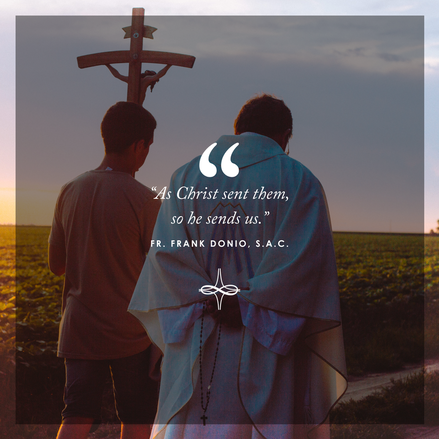
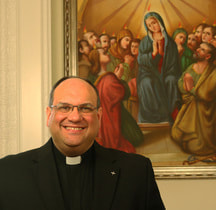
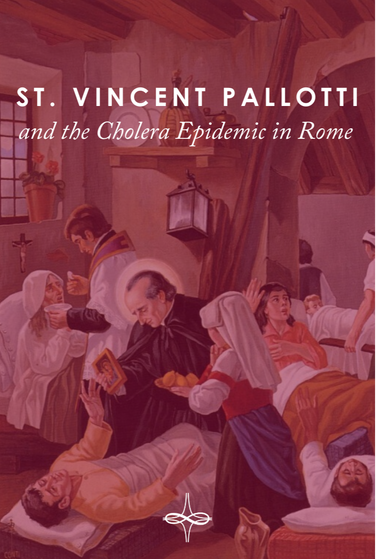
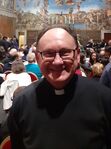
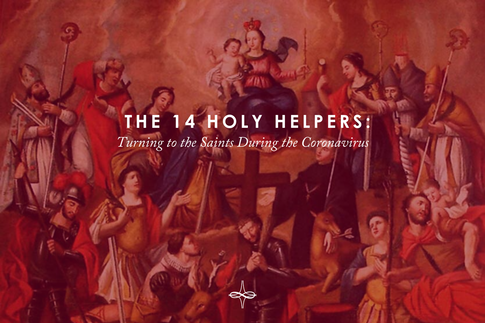
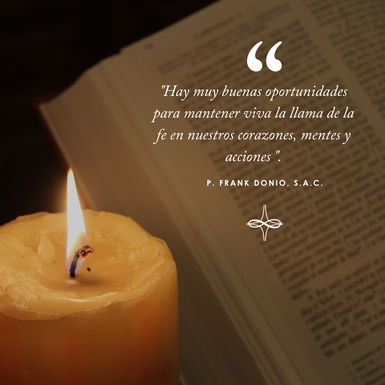
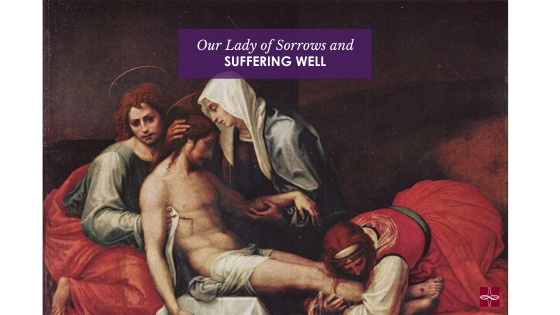



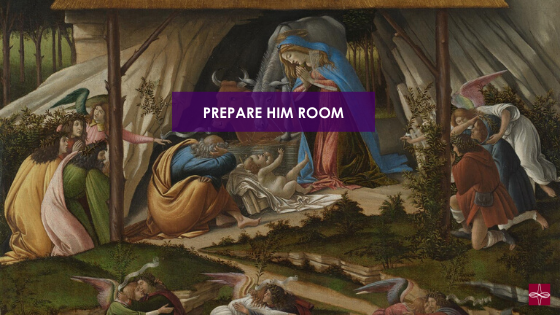

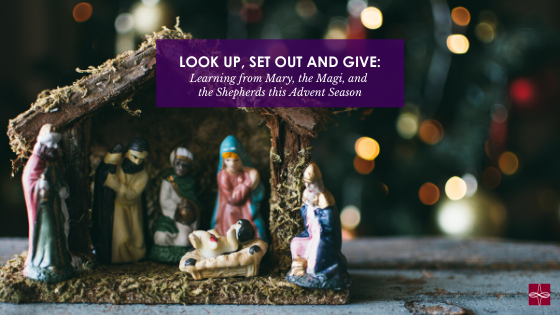
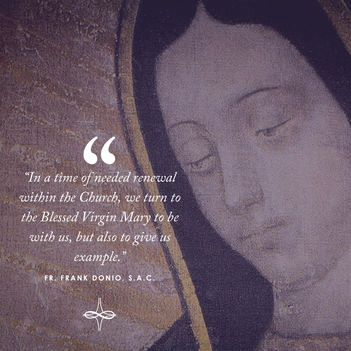
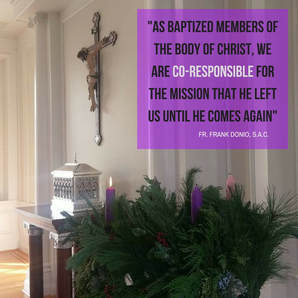
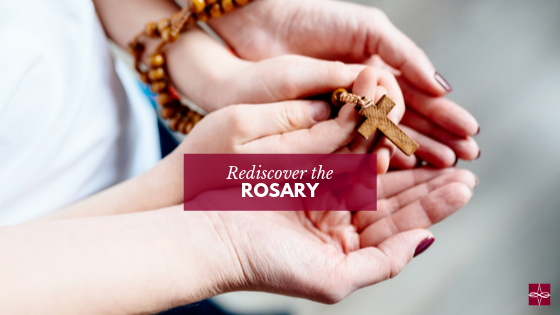

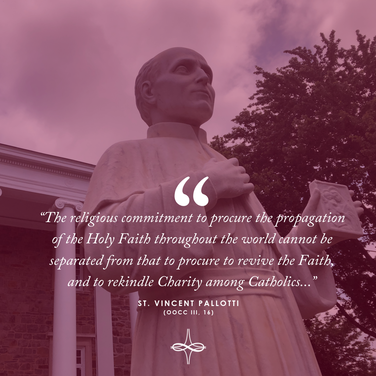
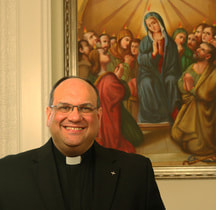
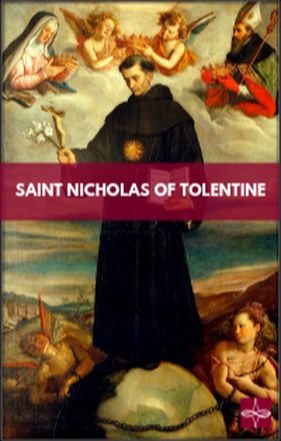

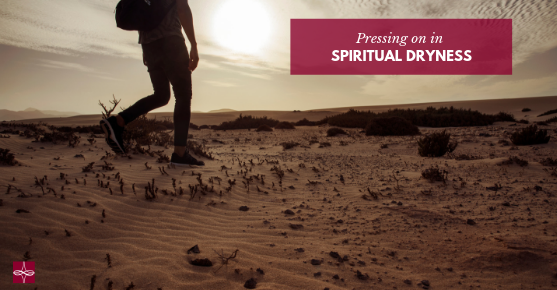

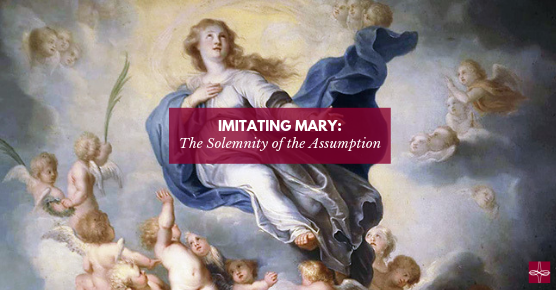

 RSS Feed
RSS Feed